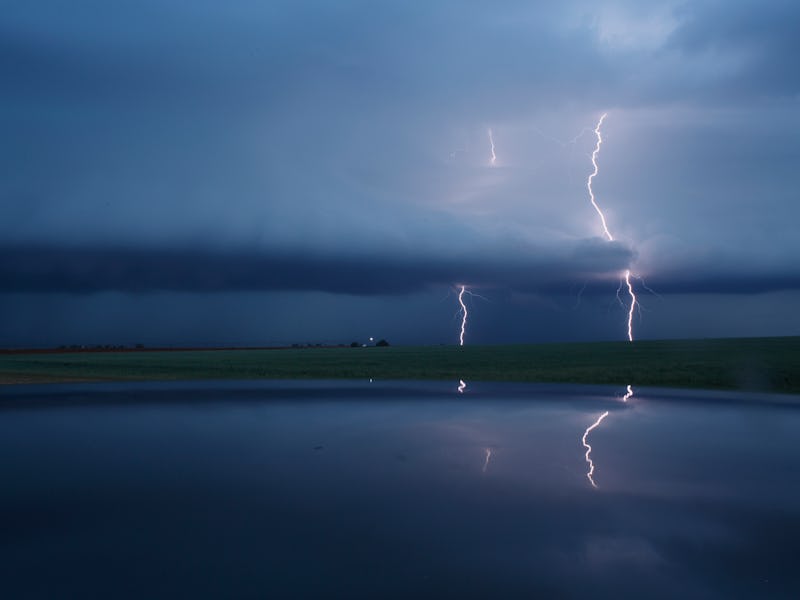
On June 1, a SpaceX Falcon 9 was meant to make history twice over as the 100th launch from Complex 39A at the Kennedy Space Center and with the first used Dragon Spacecraft. But, due to unforeseen lightning in the sky above, the mission was scrubbed just 25 minutes before the countdown and rescheduled for June 3. A little lightning may seem like no big deal, but for a rocket of this caliber, the electricity could be catastrophic.
Weather is the single greatest cause for launch delays and scrubs, and about 30 percent of weather delays are related to lightning avoidance rules, according to NASA.
Those rules are put in place and regulated by the Federal Aviation Administration. For rockets, specifically, because of the large amount of propellant the spacecraft requires to launch into space, lightning could pose explosive danger. In fact, if lightning were to strike the rocket mid-launch, it could veer off course and crash into a populated area. To prevent against this, the FAA requires that rockets have a flight termination system that would detonate the craft while it is still in flight to avoid total destruction.
Aside from, you know, the flames of death, rockets are most likely to short circuit. Just as power lines shut down during large storms, so do spacecraft. This could mean that the navigation systems are inoperable, and even the termination system meant to keep us humans and the thousands of pounds of cargo aboard the Falcon 9 safe from a crash.
Even when there is no risk of lightning, a launch could still trigger it in the clouds. The rocket and its plume can act as conductors for electrical currents that might induce a lightning flash, but this is usually much weaker than naturally occur lightning. This is actually why launches usually take place below the typically-sunny skies at Kennedy Space Center in Florida.
The first time NASA saw triggered lightning was in 1969 when a massive Saturn V rocket launched the Apollo 12 mission through clouds and caused two flashes. These flashes did not disrupt the circuitry of the rocket, thankfully, but it is what lead to the FAA regulations we see today.
The Apollo 12 mission launching on a Saturn V rocket triggered lightning.
But, even with new security measures in place, a string of lightning related mishaps ensued. In 1986, NASA attempted to launch the NOAA’s GOES-G weather satellite on a Delta 3194 rocket, but just 71 seconds after launch, it was struck by lightning and the engine shut down. This forced NASA to destroy it 20 seconds later, using the craft’s termination system, before it could hit the ground.
In 1987, an Atlas-Centaur rocket carrying a precious NAVY satellite triggered lightning, which caused the craft and its full payload to crash just 49 seconds after it left the ground. There were no passengers aboard, but everything was lost.
All of these incidents have made NASA quite cautious. Now, a team of meteorologists predict the best time for launch using state-of-the-art radars and scan the skies the day of launch to make absolutely sure there is not a cloud in the sky.
So, it may be annoying when epic launches don’t take place when they are supposed to, but, in this case, safety truly does come first.